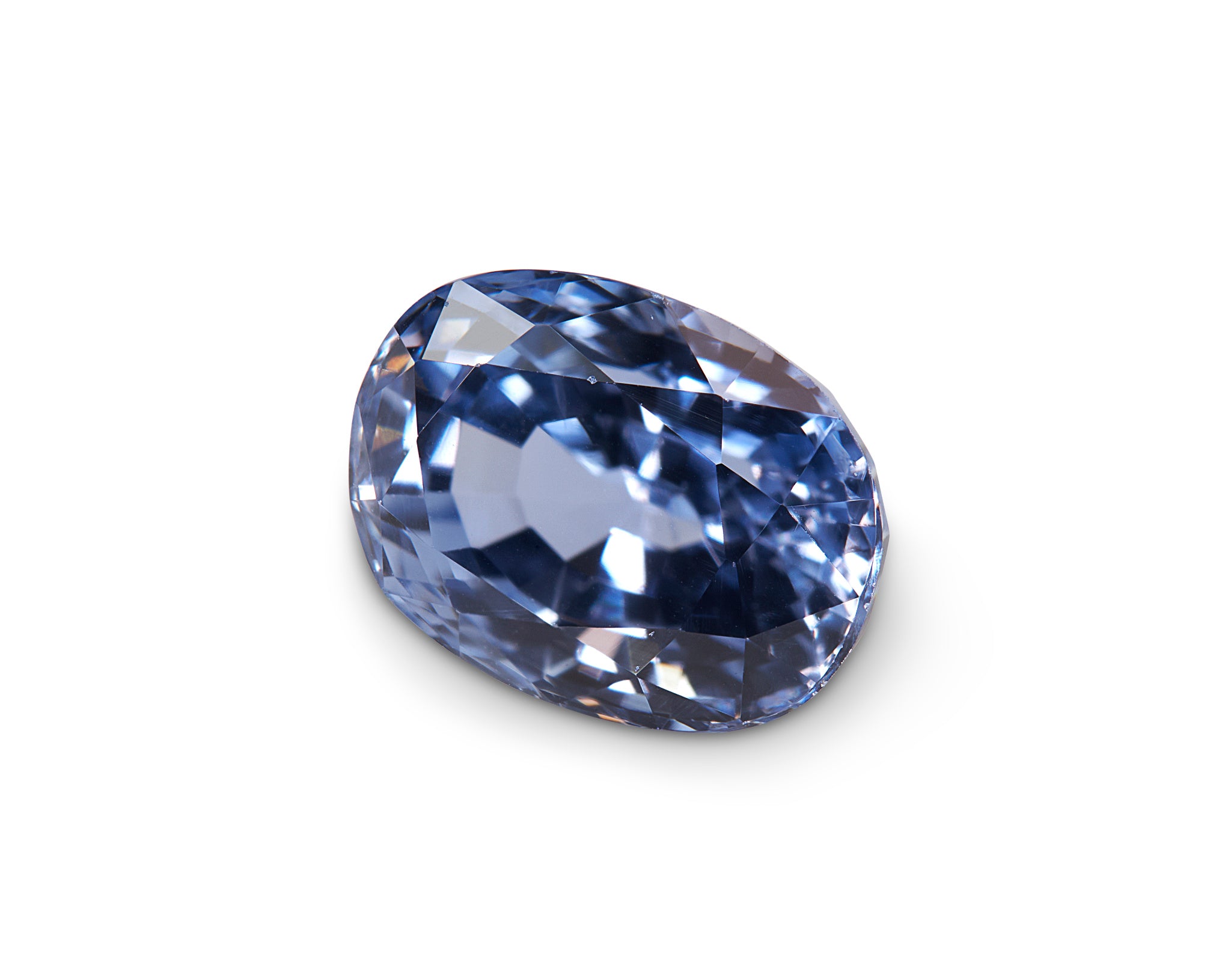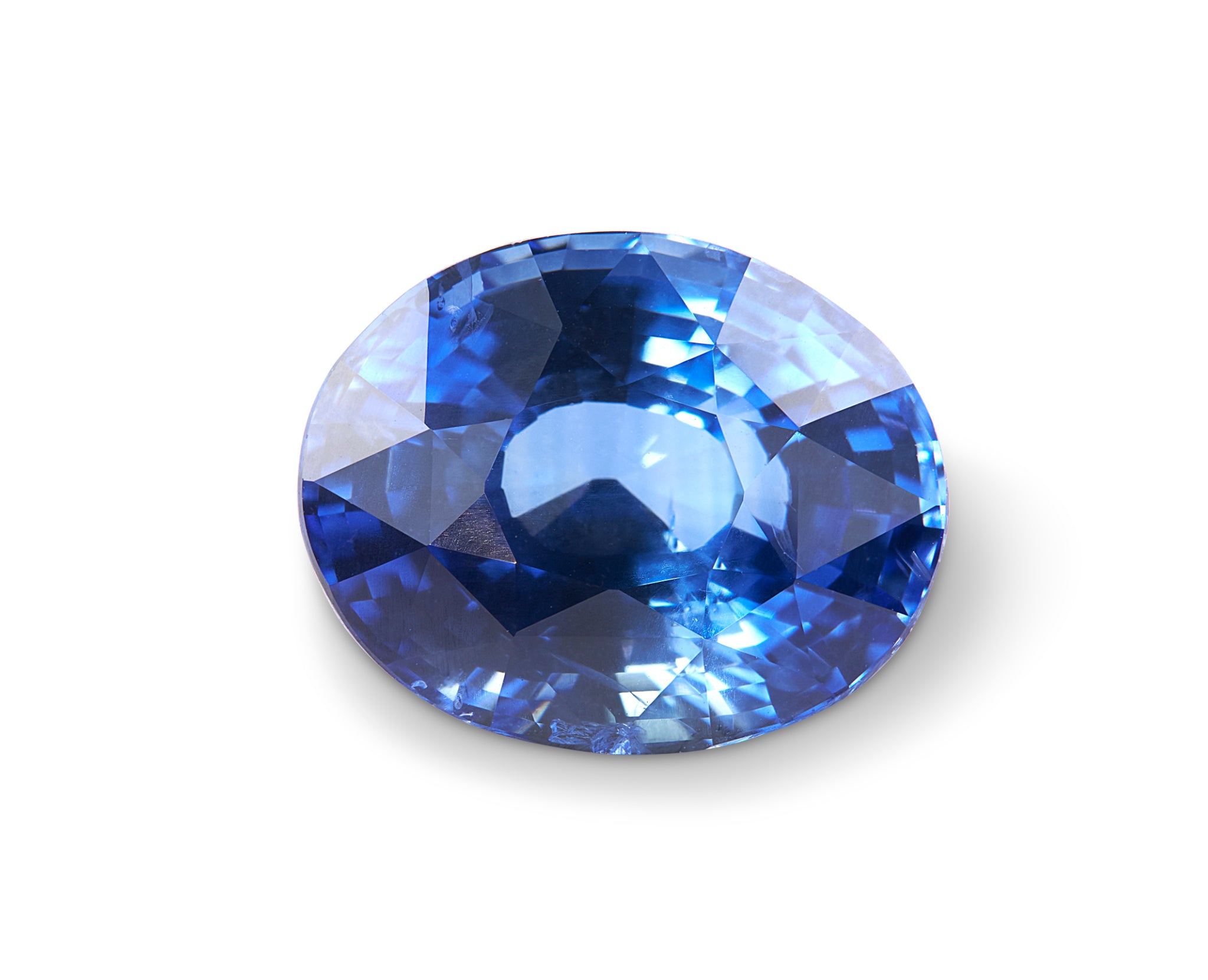History of sapphires
Everything you need to know
Table of Contents
- The Origin Of The Name Sapphire
- The Earliest Mentions of Sapphires
- Famous Sapphires Throughout History
- Sapphires: A Legacy That Endures
"You were in Eden, God's garden. You were dressed in splendour, your robe studded with jewels: Carnelian, peridot, and moonstone, beryl, onyx, and jasper, sapphire, turquoise, and emerald, all in settings of engraved gold. A robe was prepared for you the same day you were created." ~ Ezekiel 28:13
1. The Origin of the name sapphire
The mining of sapphires dates back to 800 BC, making them one of the Earth's earliest documented gemstones. Throughout history, sapphires have been cherished for their beauty, symbolism, and rarity, gracing the crowns of royalty and inspiring myths across civilisations.
The name sapphire is derived from the Greek Sapphirus. However, historical accounts suggest that ancient mineralogists such as Theophrastus and Pliny may not have referred to what we now recognise as sapphire. Instead, Sapphirus likely referred to gold-spangled lapis lazuli from Afghanistan. It is more probable that the sapphire of today was historically known as Hyacinthus.
2.30ct Pastel Blue Sapphire
Mined from deep within the earth, then lovingly hand-faceted into a scintillating oval cut to reveal its exquisite hidden brilliance, let this 2.30ct Pastel Blue Sapphire be your moment-defining treasure.
A third-century Latin grammarian and geographer, Gaius Julius Solinus, described the Hyacinthus stone as follows:
"Amongst those things of which we have treated is found also the Hyacinthus, of a shining blue colour, a stone of price, if it be found without a blemish, for it is extremely subject to defects. For generally it is either diluted with violet or clouded with dark shades, or else melts away into a watery hue with too much whiteness. The best colour of the stone is an equable one, neither dulled by too deep a dye, nor too clear from excessive transparency, but which draws a sweetly-coloured tint from the double mixture of brightness and violet. This is the gem that feels the influence of the air, and sympathises with the heavens, and does not shine equally if the sky be cloudy or bright. Besides, when put into the mouth it is colder than other stones. For engraving upon, indeed, it is by no means adapted, insomuch as it defies all grinding; it is not, however, entirely invincible, since it is engraved upon, and cut into shape by means of the diamond."
This passage highlights some of sapphire's defining characteristics: its deep blue colour, hardness and durability, and its interaction with light and surroundings. The most valuable sapphires have a hue compared to a cornflower blossom, with a velvety richness that enhances their visual desirability.

Ancient Roman Sapphire Ring - 3rd Century AD
2. The Earliest Mentions of Sapphires
Sapphires appear in some of the oldest known texts, including the Old Testament of the Bible, where they are mentioned in Exodus, Job, Ezekiel, and Lamentations. One particularly striking reference comes from Ezekiel 28:13:
"You were in Eden, God's garden. You were dressed in splendour, your robe studded with jewels: Carnelian, peridot, and moonstone, beryl, onyx, and jasper, sapphire, turquoise, and emerald, all in settings of engraved gold. A robe was prepared for you the same day you were created."
Sapphires were also well-known in antiquity under different names.

Roman Sapphire Cameo - 1st Century AD
Tabropane (Ancient Sri Lanka)
Ceylon (modern-day Sri Lanka), one of the oldest known sources of sapphires, was referred to as Tabropane by the Greeks and Romans and as Serendib by the Persians. The island's rich deposits of sapphires and other gemstones have been referenced for thousands of years. Some legends suggest that King Solomon gifted sapphires from this region to the Queen of Sheba.

Taprobane in the Catalan Atlas (1375): "Illa Trapobana".
Sinbad the Sailor
The legend of Sinbad the Sailor from One Thousand and One Nights speaks of a land overflowing with precious gemstones, often believed to be Sri Lanka, historically renowned as a source of Earth's finest sapphires and rubies. In Sinbad's Sixth Voyage, he is shipwrecked on an island where rivers flow with rubies (also corundum) and diamonds, and the land glittered with untold riches. While sapphires are not explicitly mentioned in the tale, Sri Lanka's association with the gemstone and its mention of rubies suggests sapphires were among the treasures that inspired these legendary accounts.

Sinbad's Sixth Voyage to Sri Lanka
Marco Polo
In the 13th century, the famed Venetian explorer Marco Polo chronicled his travels across Asia, including his journey to Serendib (modern-day Sri Lanka). In his writings, he marvelled at the island's extraordinary wealth of gemstones, describing it as a land abundant in rubies, topazes, amethysts, and sapphires. According to Polo, the King of Sri Lanka possessed a gemstone so magnificent that it defied belief, "a ruby a span long and without a flaw" which some historians speculate may have been a sapphire, given the historical tendency to misidentify corundum gems. Polo's accounts reinforced Sri Lanka's legendary reputation as a land of natural riches, where merchants from distant lands, including Persia, Arabia, and China, came to trade for its coveted gemstones.
The trade of sapphires and other precious gemstones flourished along the Silk Road. Sri Lankan sapphires made their way into Europe, the Middle East, and Asia long before Alexander the Great's conquests in the 3rd century BC.

A close-up of the Catalan Atlas depicting Marco Polo
Mysticism, Royalty and Protection
For millennia, sapphires have been intertwined with magic, alchemy, and spirituality. In the Middle Ages, Arabian kings wore sapphires to protect themselves from harm and envy. Medieval European kings wore sapphires around their necks as a defence against poisoning and evil spirits, and the clergy often adorned themselves with sapphires to symbolise heavenly wisdom and purity. Additionally, the Ancient Greeks dedicated the sapphire to Apollo, believing it ensured divine favour when consulting his oracle.
3. Famous Sapphires Throughout History
Several sapphires have become legendary due to their size, beauty, and royal and high-society associations. Here are some of the most famous sapphires in history:
The Stuart Sapphire
The Stuart Sapphire, a 104ct oval cut blue sapphire, is one of the most significant gemstones held in the British Crown Jewels. The origins of the Stuart Sapphire remain somewhat a mystery, but it is thought to have once belonged to King Alexander II of Scotland (reigned 1214–1249). The gemstone was likely set into his coronation regalia, signifying the sovereignty of Scottish kings. As centuries passed, the sapphire became an important piece of the Stuart dynasty's royal jewels. The name "Stuart Sapphire" is derived from this connection, as it was closely associated with the exiled Stuart kings of Scotland and England.
Historical accounts suggest that when King James II was deposed in the revolution of 1688, he fled to France, taking several royal treasures with him, including the Stuart Sapphire. The gemstone then spent years in exile, passing through various European courts as the Stuart cause sought to reclaim the throne. For over a century, the sapphire remained outside Britain until it resurfaced in the 19th century in the possession of King George III. It is unclear exactly how the gemstone returned to Britain, but some historians believe it was either reclaimed through diplomatic channels or acquired from a European collector.
By the time Victoria became Queen of England in 1837, the Stuart Sapphire was back in British royal hands. Queen Victoria chose to incorporate it into the Imperial State Crown, a piece traditionally worn by British monarchs during state ceremonies. Initially, the sapphire held a prominent position at the front of the crown, directly beneath the Black Prince's Ruby, another iconic gemstone in the Crown Jewels. However, in 1909, the Stuart Sapphire was moved to the back of the crown to make way for the Cullinan II diamond, cut from the largest diamond ever discovered. Today, the Stuart Sapphire remains an integral part of the Imperial State Crown, placed at the back of the band, just below a row of sparkling emeralds and sapphires.


The Stuart Sapphire in the Imperial Crown
The Rockefeller Sapphire
The Rockefeller Sapphire is one of the most famous sapphires in the world, known for its extraordinary size, rich blue colour, and prestigious origin. The 62.02-carat, internally flawless, rectangular step-cut sapphire originates from Burma (modern-day Myanmar). Burmese sapphires are coveted for their deep royal blue hue, and the Rockefeller Sapphire is no exception. Unlike many sapphires that undergo heat treatment to enhance their colour, this sapphire is unheated, making it a one-of-a-kind jewel.
The sapphire initially belonged to an Indian maharaja before it was acquired by John D. Rockefeller Jr., the son of oil magnate John D. Rockefeller Sr., in the 1930s. Rockefeller Jr. purchased the sapphire for his wife, Abby Aldrich Rockefeller, a philanthropist and key figure in the founding of the Museum of Modern Art (MoMA) in New York. After Abby's passing in 1948, the sapphire was re-cut and reset by renowned jeweller Van Cleef & Arpels before being passed down through the Rockefeller family.
The gemstone remained in the family's private collection for decades before it was sold at auction. In 1988, it was sold at Christie's for $2.85 million, setting a world record for the highest price reached for a sapphire at auction. It reappeared at auction in 2001 and was sold once again in 2005. Due to its unheated status, Burmese origin, and prestigious lineage of ownership, the sapphire remains one of the most valuable blue sapphires ever sold.

The Rockefellar Sapphire
The Logan Sapphire
The Logan Sapphire is one of the world's largest and most spectacular faceted blue sapphires. This gemstone has an illustrious history and remains one of the most prized treasures in the Smithsonian Institution's National Gem Collection. The Logan Sapphire weighs an extraordinary 422.99 carats and is a cushion-cut, untreated blue sapphire of Sri Lankan (Ceylon) origin. The Logan Sapphire's colour is a classic cornflower blue. Unlike many sapphires of this size, the Logan Sapphire is remarkably clear and free of significant inclusions, making it an even more extraordinary specimen. It is also unheated, meaning its colour and clarity are entirely natural, a rarity for sapphires in general.
The sapphire is named after Mrs. Polly Logan, a Washington, D.C., socialite and philanthropist who once owned the gemstone. While its earlier history remains somewhat obscure, the sapphire was sourced from Sri Lanka and later set into a stunning brooch, surrounded by 20 round brilliant-cut diamonds totalling approximately 16 carats. In 1960, Mrs. Logan donated the gemstone to the Smithsonian Institution, where it remains one of the most famous pieces in the National Museum of Natural History's Hall of Gems.


The Logan Sapphire - housed at the Smithsonian Museum.
Princess Diana's Sapphire Engagement Ring
Princess Diana's spectacular sapphire engagement ring is one of the most iconic jewellery pieces in modern history. It is a magnificent 12-carat royal blue sapphire in an oval cut, surrounded by a halo of 14 round brilliant-cut diamonds and set in 18-karat white gold. Unlike most royal engagement rings, which are custom-designed, Diana's ring was not a custom piece. Instead, it was chosen from the Garrard jewellery collection, the official jeweller of the British royal family. At the time, this decision was seen as unconventional, as most members of the royal family preferred a one-of-a-kind, custom-made ring. However, Diana immediately fell in love with the ring, drawn to its beauty and deep royal blue hue. The sapphire is of Ceylon (Sri Lankan) origin, the country famed for producing Earth's most exceptional sapphires. Diana's engagement ring quickly became one of the world's most recognised pieces of jewellery, setting trends in sapphire engagement rings that continue today. After Diana's passing in 1997, the ring was inherited by Prince William, who, in a profoundly sentimental gesture, proposed to Catherine Middleton (now the Princess of Wales) with it.

Princess Diana wearing her engagement ring

Replica of Princess Diana's Engagement Ring
4. Sapphires: A Legacy That Endures
From ancient mythology to royal treasures, sapphires have held an unparalleled place in history. Their beauty, rarity, and symbolism have made them one of the most sought-after gemstones in the world, and they continue to captivate admirers today.
6.11ct Cornflower Blue Sapphire
This is a spectacular example of a premium quality cornflower blue sapphire of Ceylon origin, with its bright, bold and lustrous hue, generous carat size, and unparalleled clarity. Acquired by a talented gemologist who we work in close partnership with, when he showed us his latest discovery, we couldn't resist acquiring it for The Sapphire Merchant collection.
The Sapphire Merchant
Owning your own sapphire means embracing a piece of Earth's most precious treasures. From their ancient use in royal crowns to modern-day custom jewellery, sapphires have always stood for wisdom, nobility, and everlasting beauty.
By selecting a sapphire, you are acquiring a piece of history imbued with meaning and a timeless connection to the earth. Whether you are creating a custom sapphire ring, pendant, or any piece of jewellery, a sapphire will always remain a cherished and valuable asset.
The Sapphire Merchant is a leading supplier of natural sapphires from Ceylon, Burma, Madagascar, Tanzania and Thailand. Browse our beautiful collection and find the perfect option for you!















